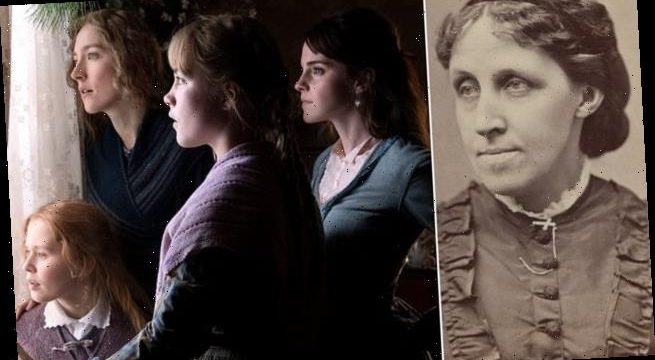Unfinished 1840s story by Little Women author Louisa May Alcott is published for the first time – with readers left to imagine how the tale of a love triangle will turn out
- The 17-year-old Alcott wrote the 9,000 word text in the 1840s but never finished
- Story narrated by the 40-year-old Nellie is being published in Strand Magazine
- The magazine says it will draw up guidelines for readers to finish off the story
Louisa May Alcott (pictured) wrote a draft of the story Aunt Nellie’s Diary in the late 1840s but never finished the manuscript
An unfinished story by Little Women author Louisa May Alcott is being published for the first time – with readers encouraged to provide their own ending.
The 17-year-old Alcott wrote a draft of the story Aunt Nellie’s Diary in the late 1840s but the 9,000-word fragment was never completed.
The work is narrated by the 40-year-old Nellie and follows a love triangle among her orphaned niece Annie Ellerton, Annie’s dark-haired friend Isabel Loving and the visiting Edward Clifford, a ‘tall, noble-looking’ young man with a complicated past.
The text is now being published by Strand Magazine which is inviting its readers to complete the narrative, which cuts out with several loose ends unresolved.
Alcott’s work has returned to the spotlight recently following last year’s successful new film adaptation of Little Women, starring Emma Watson and Saoirse Ronan.
Strand managing editor Andrew Gulli found a reference to the manuscript during an online search of Alcott’s archives, stored at Harvard University’s Houghton Library.
The story appears in the magazine’s spring issue, delayed until now because of the coronavirus pandemic.
‘What struck me was the maturity of the work,’ says Gulli, who in recent years has published little-known fiction by Ernest Hemingway, Tennessee Williams and many others in the literary quarterly.
‘Here was Alcott, who was on the cusp of adulthood, creating a complex work, where her main character is a single woman in her 40s, who defies many of the stereotypes of how women were portrayed in mid-19th century America.’
Because ‘Aunt Nellie’s Diary’ ends with various storylines unresolved, Gulli is inviting readers to complete the story. ‘We’ll post guidelines in the coming weeks,’ he says.
Alcott was born in Germantown, Pennsylvania, but spent much of her childhood moving around Massachusetts as her father, the educator and philosopher Amos Bronson Alcott, ran an experimental school and an agrarian commune.
Louisa May and her three sisters were employed in various jobs, and the author would speak of her writing as a release from the family’s ongoing financial struggles.
Around the same time she attempted ‘Aunt Nellie’s Diary,’ she worked on her first novel, ‘The Inheritance,’ which remained unpublished until the 1990s.
Emma Watson as Meg March, Florence Pugh as Amy March, Saoirse Ronan as Jo March and Eliza Scanlen as Beth March in last year’s adaptation of Little Women by Louisa May Alcott
Museum visitors stand near a portrait of author Louisa May Alcott by American artist George Healy at Orchard House in Concord, Massachusetts
Alcott´s reputation is defined by ‘Little Women,’ the classic novel from the late 1860s about a New England family that was based on her own childhood.
But she also published bloodied thrillers, children’s stories and sketches based on her volunteer work as a nurse during the Civil War.
Alcott scholar Daniel Shealy says that ‘Aunt Nellie´s Diary’ reflects what the author called her sentimental phase, her early immersion in such British authors as Charles Dickens and Sir Walter Scott.
‘You can see her picking up on some of the romanticized, even sensationalized material from those books.
It’s a tough time for her, because the family was short of money, but it’s also a creative time. She’s beginning to develop and mature as a writer,’ says Shealy, a professor of English at the University of North Carolina-Charlotte.
‘If I had to compare this to Little Women, I’d say that you can see her ability to create characters that you can take an interest in.
‘And you see her ability to have several strands of the story going off in different directions, and you’re wondering how she going to tie this all together.
‘Clearly, this story is building to a big reveal, and we’re going to learn new things about the characters’ pasts.’
Source: Read Full Article



